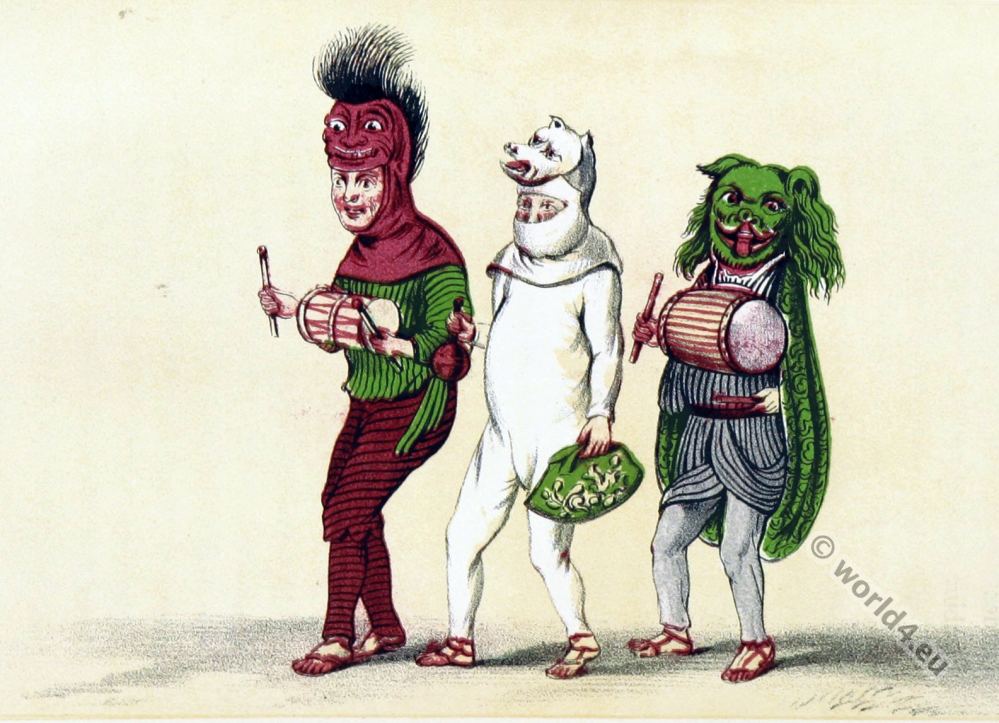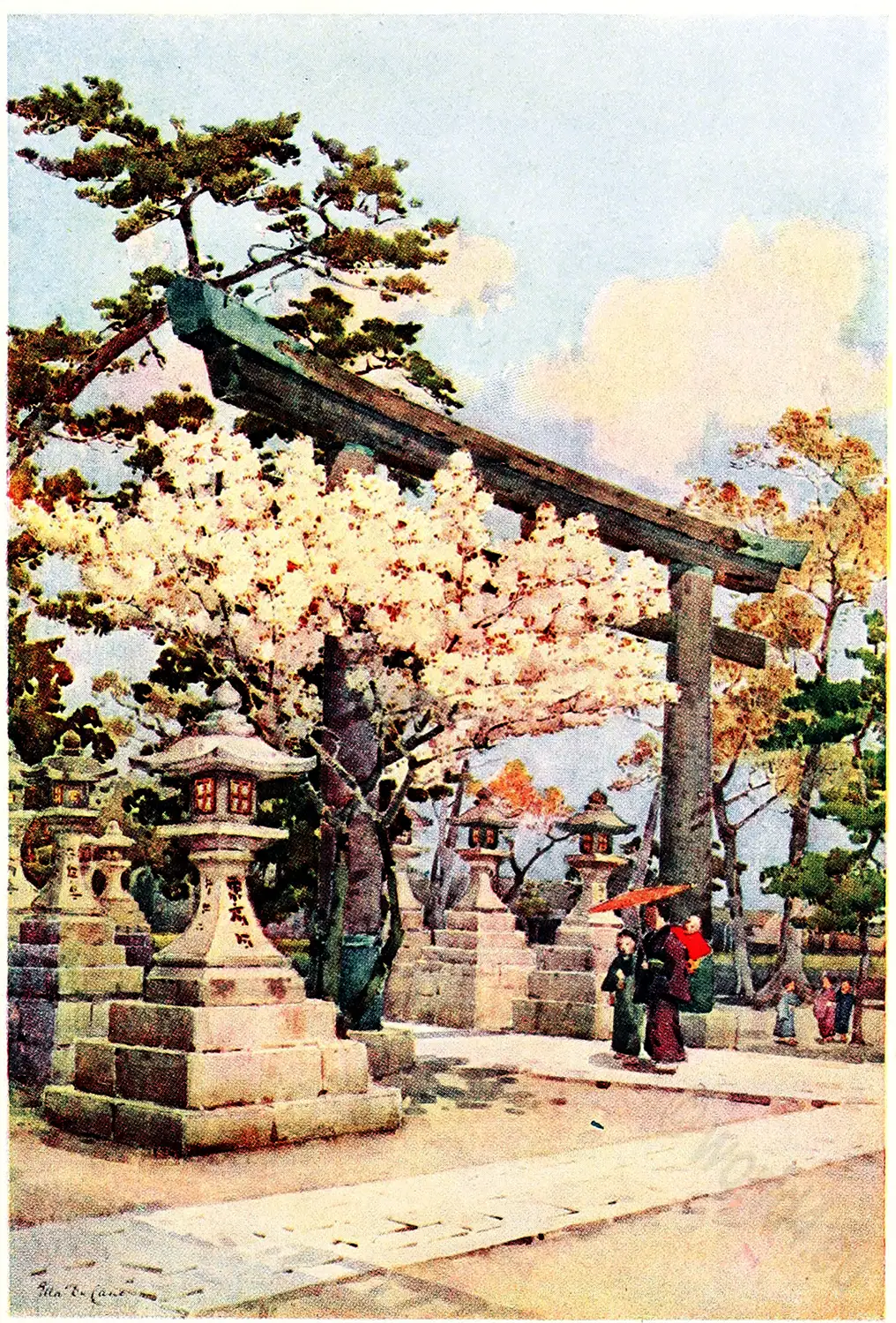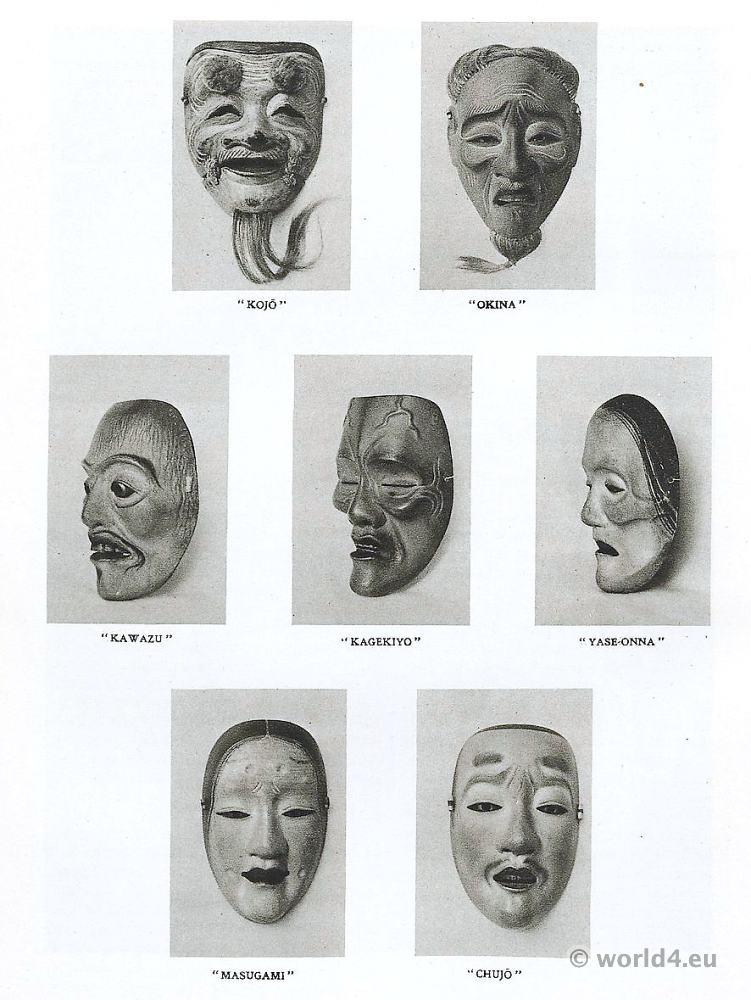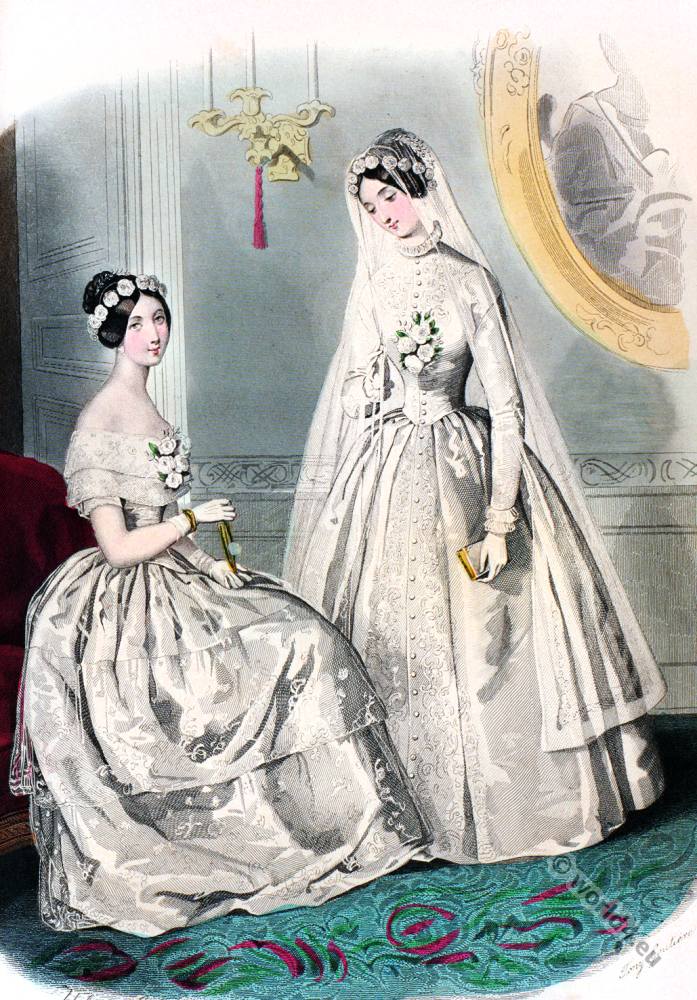THE FLOWERS OF JAPAN. SPRING FLOWERS.
CHERRY BLOSSOMS
by Josiah Conder
THE third month of the old Spring, corresponding with the present April, is the month of the Cherry blossom, the King of flowers in Japan. This flower is ff remarkable for its softness and exuberance, as contrasted with the severe simplicity of the plum blossom.
The latter blooms fresh, vigorous, and leafless, in the bare and often snow-clad landscape; the former, with its florid richness, enhanced in some cases by young reddish leaves, is specially fitted to assert itself amid the greenery of budding Spring.
But the splendour of the Cherry’s bloom is transitory in comparison with the more lasting qualities of the plum, which retains its beauty for a full month. The Cherry flowers must be viewed during the few short days of their prime, and should these days be stormy, the full glory of the sight is lost. The most enthusiastic partizans of the Cherry blossom assert that it is all the more precious on account of its transient character.
The wild Cherry seems to have existed in Japan from time immemorial, and still abounds in the woods of the Northern island, where the Aino aborigines apply its bark to many purposes. In ancient times, however, the plum tree, of Chinese importation, seems to have absorbed the attention of the Court and people, and it was in later times that the Cherry, the flower of the country, appears to have found its place in their affections. Though early records refer often to the plum, there is no mention of the Cherry earlier than the time of Richiu, an Emperor of the fifth century.
This Monarch was disporting himself with his courtiers in a pleasure boat, on the lake of the Royal park, when some petals from the wild Cherry trees of the adjoining hills fluttered into the wine cup from which he was drinking.
This circumstance is said to have drawn His Majesty’s notice to the beauty of this neglected blossom, and from this time also arose the custom of wine drinking at the time of Cherry viewing. To this day there is a popular saying, “Without wine who can properly enjoy the sight of the Cherry blossom?” It was reserved for a later Emperor in the eighth century to give to the Cherry that importance as a national flower which it has ever since retained.
Whilst on a hunting expedition on Mount Mikasa, in the province of Yamato, the Emperor Shomu, attracted by the beauty of the double Cherry blossoms, composed the following short verse, which be sent, with a branch of the flowers, to his favourite Consort, Komio Kogo:
“This gathered cherry branch can scarce convey
A fancy of the blossom-laden tree,
Blooming in sunlight; could I shew it Thee,
Thoughts of its beauty would drive sleep away!”
To satisfy the curiosity of the ladies of His Court, the Emperor afterwards ordered Cherry trees to be planted near the Palace at Nara, and from this time the custom was continued at each succeeding Capital.
Yamato, the province in which were situated several of these ancient Capitals, is the most noted for its Cherry groves, and at a spot called Yoshino a thousand trees line the path and cover the hill side. It was a favourite fancy to compare the appearance of these trees in blossom to mists or snow upon the hills. (“The Cherry blossoms on Mount Yoshino deceive me into thinking they are snow!”)
In the thirteenth century the Emperor Kameyama caused a number of Cherry trees from Yoshino to be planted at Arashiyama, a beautiful hilly spot on the banks of the rapid river Oi. Here he built a Summer pavilion, and, in Spring and Autumn, Court after Court visited the lovely spot, rendered further famous in a verse composed by one of the Imperial line; —” Not second to Yoshino, is Arashiyama, where the white spray of the torrent sprinkles the Cherry blossoms.”
This spot no longer possesses its Imperial pavilion, but remains a favourite resort for sight-seers from the Western capital, in the months of the Cherry and Maple. Numerous tea houses and booths, on the banks of the rapids, give a fine view of the wooded hills opposite, amidst the Spring greenery of which may be seen the pearly white clouds of the Cherry blossoms.
Here the blossoming trees form a part of the distant landscape, as they must have been originally viewed in their natural wildness, when they first attracted the admiration of the earlier Emperors, and before their more gorgeous successors of double-flower became arranged and isolated in artificial orchards and avenues.
In and near to the present Eastern Capital are several spots renowned for their show of Cherry trees in blossom, originally brought from Yoshino, and from the banks of the Sakura river in the province of Hitachi. One of these resorts, at a place called Asukayama, is often spoken of as the New Yoshino.
Koganei, some half day’s ride from Tokio, is perhaps the most attractive spot for seeing the double Cherry in full bloom. Here a fine avenue of these flowering trees extends upwards of two and a half miles along the aqueduct which conveys the water of the river Tama to Tokio.
It is said that they were first planted immediately after the completion of the aqueduct, by command of the Shogun Yoshimune, in the beginning of the eighteenth century, with the idea that Cherry trees had the virtue of keeping off impurities from water. For this purpose ten thousand trees were brought from Yoshino, and from the banks of the river Sakura; but the number now remaining has dwindled to only a few hundred.
In the old temple grove, now a public park, at Uyeno, there are a number of fine trees of the single early Cherry blossom, called by the Japanese Higan-zakura, among which are some magnificent specimens of the Weeping Cherry.
This latter species has pendant branches, drooping like the willow, and bears single white flowers, but no fruit; thus being an exception to the general rule, that the trees of single blossom bear fruit whilst those of double blossom are fruitless.
The fruit of the Japanese Cherry tree, is, however, at its best insipid and worthless. These trees at Uyeno are all of majestic size, and present a gorgeous sight in April, with their pale pink blossoms seen partly against the blue sky, and partly against the rich foliage of the pines and cedars which surround the golden shrines and cenotaphs of the Shoguns.

The most popular resort in Tokio is the Cherry avenue at Mukojima, extending for more than a mile along the banks of the river Sumida. Here the trees lack the grandeur and natural beauty of those at Uyeno, and have no surrounding foliage to set them off; but they are of double blossom, and bending with their weight of flowers, looking almost artificial in their luxurious fullness,—present a most imposing sight. This spot is frequented by the gayest holiday makers.
Wine drinking is considered essential to a proper enjoyment of the scene, and crowds of pedestrians, bearing their gourds of rice-wine, make such resorts merry and boisterous with their carousals. Other visitors, of a richer class, indulge in the prospect of the blossom-laden banks from roofed pleasure boats, accompanied often by a gay gathering of singing girls.
The month of the Cherry is one of high winds, and the soft petals of the full blown blossoms fall like snow flakes covering the pathways beneath. This simple fact is not without its attraction to the Japanese, who make much of the falling Cherry petal in their poetry and other arts.
“No man so callous but he heaves a sigh
When o’er his head the wither’d cherry flowers
Come flutt’ring down. Who knows? the Spring’s soft show’rs
May be but tears shed by the sorrowing sky.” Chamberlain.
- Tsukioka Yoshitoshi (jap. 月岡 芳年; * 1839 – 1892; later Taiso Yoshitoshi 大蘇 芳年) was one of the last great masters and one of the great innovative and creative minds of classical Japanese woodblock prints, especially Ukiyo-e.
- CHERRY BLOSSOMS AT MUKOJIMA
- CHERRY BLOSSOMS AT DUSK (YO-ZAKURA). YOSHIWARA, TOKIO.
Source: The floral art of Japan: being a second and revised edition of the flowers of Japan and the art of floral arrangement by Josiah Conder (1852-1920). Tokio : Kelly and Walsh, Ltd. 1899.
Discover more from World4 Costume Culture History
Subscribe to get the latest posts sent to your email.










